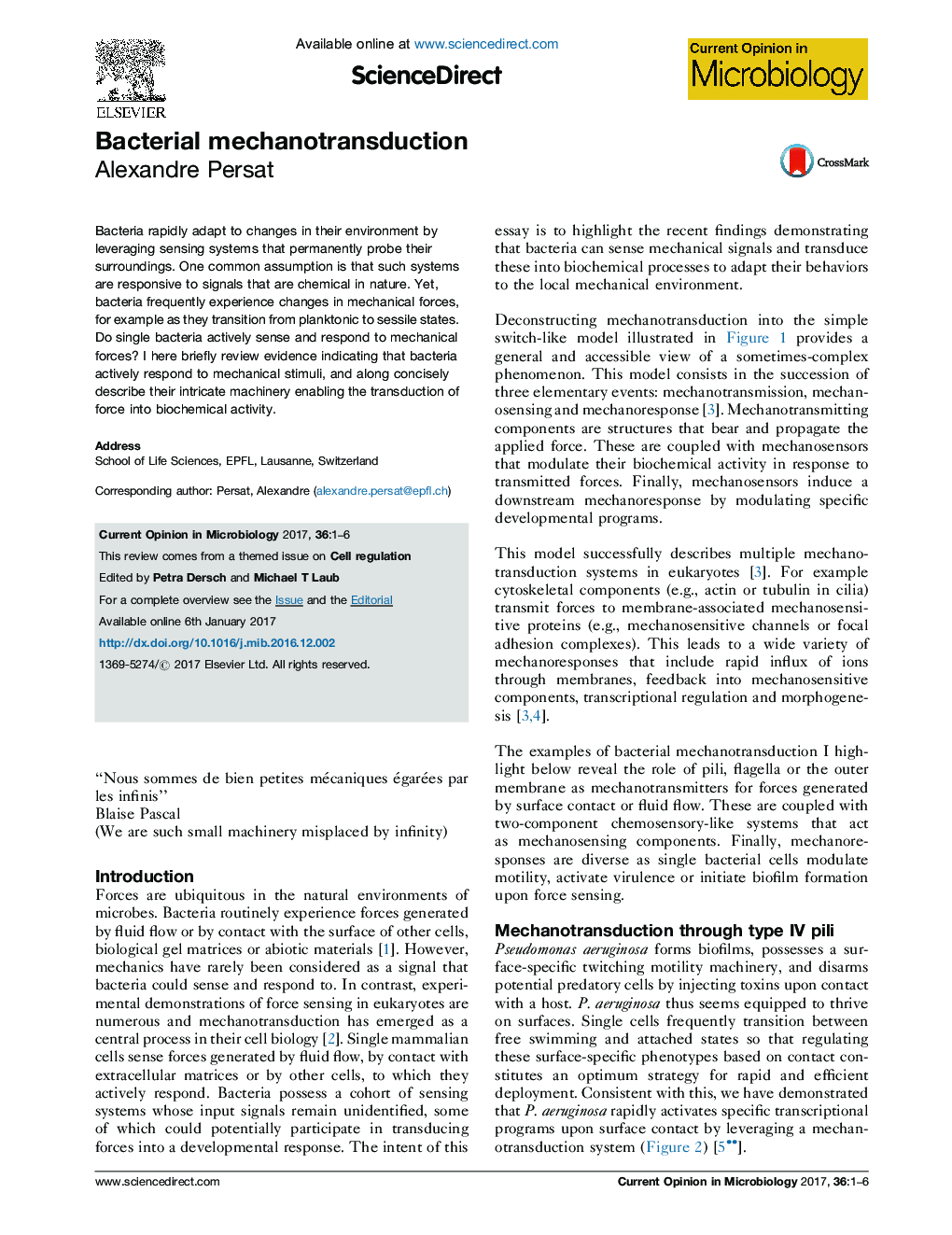| Article ID | Journal | Published Year | Pages | File Type |
|---|---|---|---|---|
| 5671741 | Current Opinion in Microbiology | 2017 | 6 Pages |
â¢In the wild, bacteria experience frequent changes in mechanical forces.â¢Mechanotransduction allows bacteria to sense and respond to these changes.â¢Mechanotransmitting components propagate applied forces to sensing components.â¢Two-component systems detect mechanically induced changes in mechanosensor state.â¢Regulators induce a mechanoresponse adapting cells to new mechanical environment.
Bacteria rapidly adapt to changes in their environment by leveraging sensing systems that permanently probe their surroundings. One common assumption is that such systems are responsive to signals that are chemical in nature. Yet, bacteria frequently experience changes in mechanical forces, for example as they transition from planktonic to sessile states. Do single bacteria actively sense and respond to mechanical forces? I here briefly review evidence indicating that bacteria actively respond to mechanical stimuli, and along concisely describe their intricate machinery enabling the transduction of force into biochemical activity.
Graphical abstractDownload high-res image (276KB)Download full-size image
